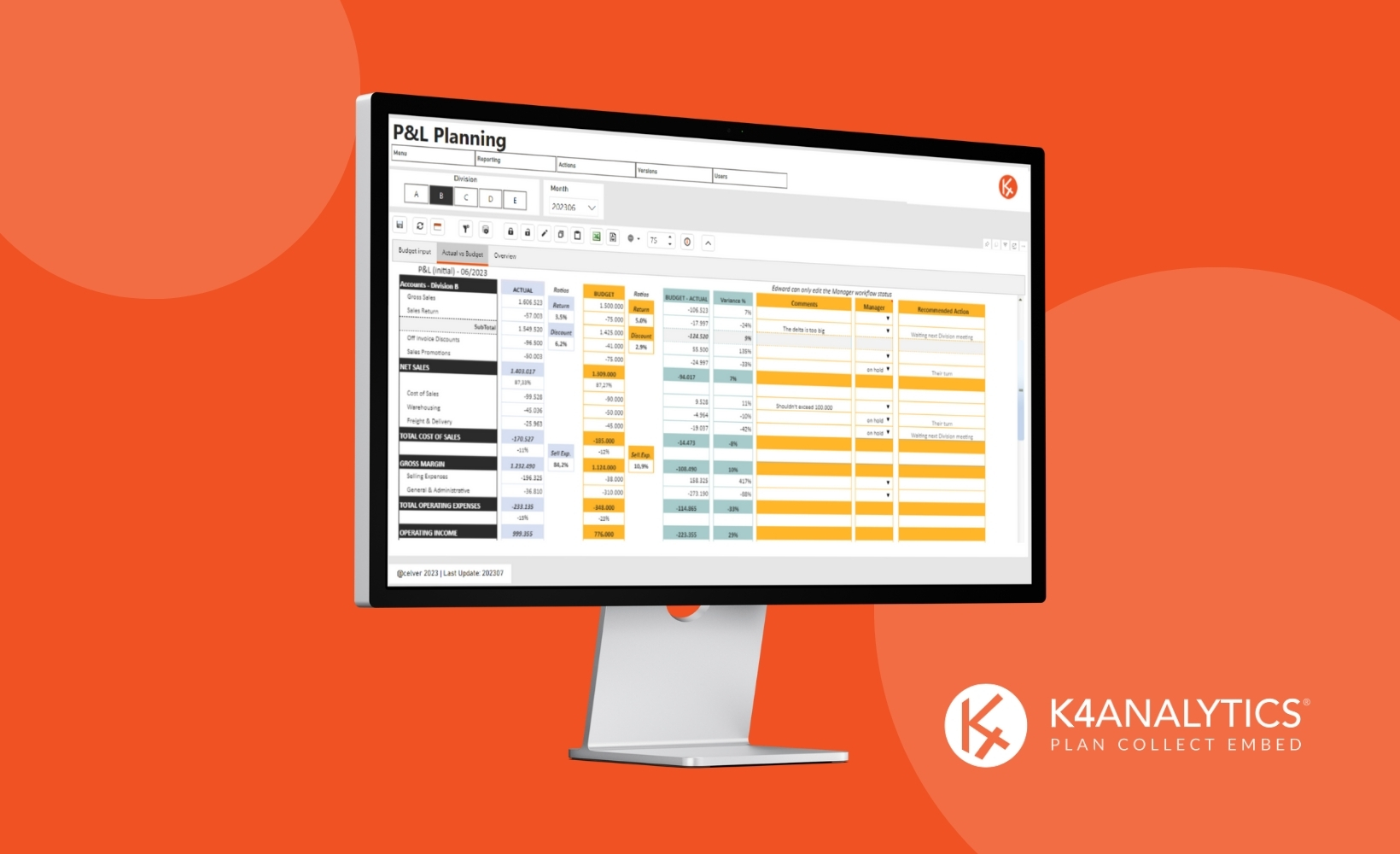Financial consolidation is a process that can absorb a lot of time and resources. Companies that perform it manually reach a point where they find that continuing to use Excel spreadsheets and manual calculations is not sustainable, as it leads to significant delays and errors.
The solution is to automate financial consolidation using specific software. A simple process that offers several benefits that we want to share with you in this article.
Automating financial consolidation: why it’s a good idea.
For many financial departments, year-end is the starting signal for one of the most frenetic periods of activity: year-end closing, annual accounts, consolidated accounts and management report… and all of this with a deadline that is never enough.
There are also business groups where the consolidation of accounts is done on a more frequent basis (quarterly or even monthly), being tasks to which many resources have to be devoted.
Companies can deal with this in two ways. One is by devoting a great deal of time and effort, continually dealing with errors and enduring a heavy burden of stress. This is especially the case when each company in the group works with a different chart of accounts, with spreadsheets in their own format or using shared documents where human errors multiply and take a lot of time to review and standardize.
The other way is much calmer and safer: using software that takes care of a large part of the process, making it a much lighter and more reliable task. This is something that is within the reach of any finance department thanks to the automation of financial consolidation.
Today there are many financial consolidation software options (such as LucaNet), which allow you to optimize the process to make it much more efficient, organized and secure. And most importantly: saving a great deal of time for finance teams and managers.
Automating financial consolidation can offer these and many other important benefits to companies. Let’s take a look at some of them.
Benefits of automating financial consolidation.
It saves time and reduces the workload of CFOs.
One of the main advantages of automating consolidation is its simplicity and time savings.
The software can import data directly from other enterprise systems such as ERPs or even Excels, aggregate it into a common repository under a single corporate chart of accounts and virtually do the consolidation process automatically. As a consequence, all timeframes are reduced and the steps to complete the consolidation, validation and certification of the business financials are drastically reduced.
Financial managers and controllers will find that a great deal of time is freed up for them to spend on other more important tasks such as analyzing the group’s financial or liquidity position, studying the conclusions of the consolidated financial statements or looking for ways to improve intra-group operations.
Reduce the number of data errors.
The use of manual media such as spreadsheets and shared documents has a high probability of human error, which is minimized by automating the consolidation process.
When performing manual operations and reviewing data among a sea of cells, sheets and formulas, it is very easy for something to be overlooked or a wrong value to be entered. This also generates a vicious cycle as it makes it necessary to spend more time and resources again to find and solve the problem, often making it very close to the closing dates or needing to spend extra hours to do so.
Having an automated consolidation system in place improves data quality while reducing deadline stress and last minute extra work peaks.
Improve information transparency.
Spreadsheets or Excel in most cases have a very poor or non-existent data traceability, which reduces the transparency of the entire consolidation process.
Managing the information with a specific consolidation software allows to maintain this traceability to the source documents, being able to make a query to the detail of the movement whenever necessary. This allows to audit and follow the information flows in a simple way, saving many calls, emails and days of delay in the work.
Improves data management and centralization.
In large organizations with complex structures, it is essential to manage data efficiently so that errors do not occur. Automation simplifies the process, making it easier for all companies in the group to have fast and reliable access to financial information.
This adds another advantage, which is the ability to compare tax information across the group. Thanks to a group-wide mapping of the chart of accounts, country-specific accounting accounts become part of an overall financial analysis where aggregations and comparisons between companies are possible.
Having centralized data under the umbrella of a single corporate chart of accounts also eliminates one of the most time-consuming parts of the consolidation process: the collection of information from different entities.
Having a centralized system virtually eliminates this time-consumption and makes it much easier to access and compare data between companies in a natural way.
Increased information security.
Automated data collection and processing makes the results more reliable, reducing the occurrence of human error. This improves confidence not only for decision making, but also for auditing processes or for seeking external investment.
Improved regulatory compliance.
Financial consolidation software complies with all accounting and financial standards that apply both nationally and internationally, thus ensuring the validity and quality of the data obtained through them.
Financial consolidation software.
The larger and more complex the company or group, the more power and reliability it needs to be able to perform financial consolidation.
It’s not worth continuing to struggle with endless, error-filled spreadsheets while there are consolidation software options that can do the job automatically, avoiding errors and saving a great deal of time and stress.
If you want to help your finance teams do their job more efficiently and free up your own time we recommend opting for software that allows you to automate key financial processes. In addition to financial consolidation, other processes can be planned within the scope of financial planning and analysis (FP&A): from income statement planning to cash forecasting, as well as financial analysis. If you would like to find out how we can help you, just contact us.
Related Articles
In a context like the current one where financial instability and market volatility are so present, it is normal that [...]
Board International was founded in the 1990s with the aim of being a Self-Service Analysis and Reporting, which goes through [...]
Time and money. If we were to carry out a market survey and ask finance directors, entrepreneurs or heads of [...]
















